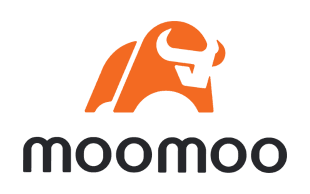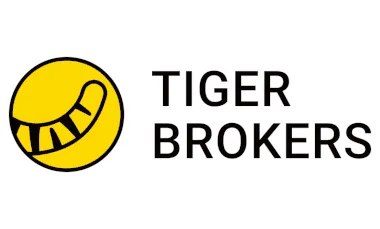Our top pick for
24/5 trading

Johnson & Johnson is a drug manufacturers - general business with stocks listed in the US. Johnson And Johnson shares (JNJ) are listed on the NYSE and all prices are listed in US Dollars. Its last market close was US$165.86 – an increase of 0.45% over the previous week. Here's how to invest if you're based in Australia.
Our top pick for
24/5 trading

Our top pick for
Copy trading

Our top pick for
Mobile app

Johnson And Johnson's shares were split on a 2:1 basis on 12 June 2001. So if you had owned 1 share the day before the split, the next day you would own 2 shares. This wouldn't directly have changed the overall worth of your Johnson And Johnson shares – just the quantity. However, indirectly, the new 50% lower share price could have impacted the market appetite for Johnson And Johnson shares which in turn could have impacted Johnson And Johnson's share price.
| 52-week range | US$138.681 - US$169.99 |
|---|---|
| 50-day moving average | US$151.911 |
| 200-day moving average | US$154.9159 |
| Target price | US$169.0653 |
| PE ratio | 28.6408 |
| Dividend yield | US$4.91 (2.99%) |
| Earnings per share (TTM) | US$5.79 |
Use the fields above to explore the returns from a historical investment. Please refer to the charts further up this page to see performance over 5 years, or other periods. Past performance doesn't indicate future results. Capital is at risk.
Historical closes compared with the last close of $165.86
| 1 week (2025-03-06) | 0.02% |
|---|---|
| 1 month (2025-02-12) | 6.83% |
| 3 months (2024-12-13) | 13.12% |
| 6 months (2024-09-12) | 0.74% |
| 1 year (2024-03-13) | 2.95% |
|---|---|
| 2 years (2023-03-13) | 8.36% |
| 3 years (2022-03-11) | -2.06% |
| 5 years (2020-03-13) | 23.51% |
We currently don't have a partnership for that product, but we have other similar offers to choose from (how we picked these ):
The technical analysis gauge below displays real-time ratings for the timeframes you select. However, this is not a recommendation. It represents a technical analysis based on the most popular technical indicators: Moving Averages, Oscillators and Pivots. Finder might not concur and takes no responsibility.
Valuing Johnson And Johnson stock is incredibly difficult, and any metric has to be viewed as part of a bigger picture of Johnson And Johnson's overall performance. However, analysts commonly use some key metrics to help gauge the value of a stock.
Johnson And Johnson's current share price divided by its per-share earnings (EPS) over a 12-month period gives a "trailing price/earnings ratio" of roughly 29x. In other words, Johnson And Johnson shares trade at around 29x recent earnings.
That's comparable to, say, the trailing 12-month P/E ratio for the NASDAQ 100 at the end of 2019 (27.29).
Johnson And Johnson's "price/earnings-to-growth ratio" can be calculated by dividing its P/E ratio by its growth – to give 1.126. A low ratio can be interpreted as meaning the shares offer better value, while a higher ratio can be interpreted as meaning the shares offer worse value.
The PEG ratio provides a broader view than just the P/E ratio, as it gives more insight into Johnson And Johnson's future profitability. By accounting for growth, it could also help you if you're comparing the share prices of multiple high-growth companies.
Johnson And Johnson's EBITDA (earnings before interest, taxes, depreciation and amortisation) is US$29.9 billion (£23.6 billion).
The EBITDA is a measure of a Johnson And Johnson's overall financial performance and is widely used to measure stock profitability.
Over the last 12 months, Johnson And Johnson's shares have ranged in value from as little as US$138.681 up to US$169.99. A popular way to gauge a stock's volatility is its "beta".
Beta measures a share's volatility in relation to the market. The market (NYSE average) beta is 1, while Johnson And Johnson's is 0.463. This would suggest that Johnson And Johnson's shares are less volatile than average (for this exchange).
| Revenue TTM | US$88.8 billion |
|---|---|
| Operating margin TTM | 18.15% |
| Gross profit TTM | US$61.8 billion |
| Return on assets TTM | 8.13% |
| Return on equity TTM | 20.06% |
| Profit margin | 15.84% |
| Book value | 29.702 |
| Market capitalisation | US$399.3 billion |
| EBITDA | US$29.9 billion |
TTM: trailing 12 months
Dividend payout ratio: 49.65% of net profits
Recently Johnson And Johnson has paid out, on average, around 49.65% of net profits as dividends. That has enabled analysts to estimate a "forward annual dividend yield" of 2.99% of the current stock value. This means that over a year, based on recent payouts (which are sadly no guarantee of future payouts), Johnson And Johnson shareholders could enjoy a 2.99% return on their shares, in the form of dividend payments. In Johnson And Johnson's case, that would currently equate to about $4.91 per share.
While Johnson And Johnson's payout ratio might seem fairly standard, it's worth remembering that Johnson And Johnson may be investing much of the rest of its net profits in future growth.
Johnson And Johnson's most recent dividend payout was on 3 March 2025. The latest dividend was paid out to all shareholders who bought their shares by 17 February 2025 (the "ex-dividend date").
Environmental, social and governance (known as ESG) criteria are a set of three factors used to measure the sustainability and social impact of companies like Johnson And Johnson.
When it comes to ESG scores, lower is better, and lower scores are generally associated with lower risk for would-be investors.
Total ESG risk: 35.8
Socially conscious investors use ESG scores to screen how an investment aligns with their worldview, and Johnson And Johnson's overall score of 35.8 (as at 12/31/2018) is pretty weak – landing it in it in the 72nd percentile of companies rated in the same sector.
ESG scores are increasingly used to estimate the level of risk a company like Johnson And Johnson is exposed to within the areas of "environmental" (carbon footprint, resource use etc.), "social" (health and safety, human rights etc.), and "governance" (anti-corruption, tax transparency etc.).
Environmental score: 3.79/100
Johnson And Johnson's environmental score of 3.79 puts it squarely in the 7th percentile of companies rated in the same sector. This could suggest that Johnson And Johnson is a leader in its sector terms of its environmental impact, and exposed to a lower level of risk.
Social score: 25.14/100
Johnson And Johnson's social score of 25.14 puts it squarely in the 7th percentile of companies rated in the same sector. This could suggest that Johnson And Johnson is a leader in its sector when it comes to taking good care of its workforce and the communities it impacts.
Governance score: 14.87/100
Johnson And Johnson's governance score puts it squarely in the 7th percentile of companies rated in the same sector. That could suggest that Johnson And Johnson is a leader in its sector when it comes to responsible management and strategy, and exposed to a lower level of risk.
Controversy score: 4/5
ESG scores also evaluate any incidences of controversy that a company has been involved in. Johnson And Johnson scored a 4 out of 5 for controversy – the second-lowest score possible, reflecting that Johnson And Johnson has a damaged public profile.
Johnson & Johnson was last rated for ESG on: 2019-01-01.
| Total ESG score | 35.8 |
|---|---|
| Total ESG percentile | 72.38 |
| Environmental score | 3.79 |
| Environmental score percentile | 7 |
| Social score | 25.14 |
| Social score percentile | 7 |
| Governance score | 14.87 |
| Governance score percentile | 7 |
| Level of controversy | 4 |
Johnson & Johnson, together with its subsidiaries, engages in the research and development, manufacture, and sale of various products in the healthcare field worldwide. It operates in two segments, Innovative Medicine and MedTech. The Innovative Medicine segment offers products for various therapeutic areas, such as immunology, including rheumatoid arthritis, psoriatic arthritis, inflammatory bowel disease, and psoriasis; infectious diseases comprising HIV/AIDS; neuroscience, consisting of mood disorders, neurodegenerative disorders, and schizophrenia; oncology, such as prostate cancer, hematologic malignancies, lung cancer, and bladder cancer; cardiovascular and metabolism, including thrombosis, diabetes, and macular degeneration; and pulmonary hypertension comprising pulmonary arterial hypertension through retailers, wholesalers, distributors, hospitals, and healthcare professionals for prescription use. The MedTech segment provides electrophysiology products to treat heart rhythm disorders; the heart recovery portfolio, which includes technologies to treat severe coronary artery disease requiring high-risk PCI or AMI cardiogenic shock; circulatory restoration products for the treatment of calcified coronary artery and peripheral artery diseases; and neurovascular care that treats hemorrhagic and ischemic stroke. This segment offers an orthopaedics portfolio that includes products and enabling technologies that support hips, knees, trauma, spine, sports, and other; surgery portfolios comprising advanced and general surgery technologies, as well as solutions for breast aesthetics and reconstruction; contact lenses under the ACUVUE brand; and TECNIS intraocular lenses for cataract surgery. It distributes its products to wholesalers, hospitals, and retailers, as well as physicians, nurses, hospitals, eye care professionals, and clinics. The company was founded in 1886 and is based in New Brunswick, New Jersey.
Looking to jump on the AI bandwagon? Here's how you can invest in ChatGPT and its parent company OpenAI from Australia.
We used Finder's proprietary algorithm to find the 10 best stocks under $10 on the ASX.
We used Finder's proprietary algorithm to find Australian-listed companies that have strong fundamentals and have a share price under $5.
Top gainers included West African Resources, Droneshield and Resolute Mining.
Check back each week to find an updated list of the most shorted stocks on the Australian Stock Exchange (ASX).
Giving shares to a loved one is a great idea, but how do you actually do it?
What is risk profiling in financial planning and how does your risk profile influence where you invest your money? Find out in this handy guide.
Find cheap stock brokerage in Australia when buying and selling shares on the ASX and other international exchanges.
Learn everything you need to know in this easy to follow, step-by-step guide to buying shares in Australia.
Should you trade shares from CommSec’s CDIA or stick with your own cash account? We compare the difference.